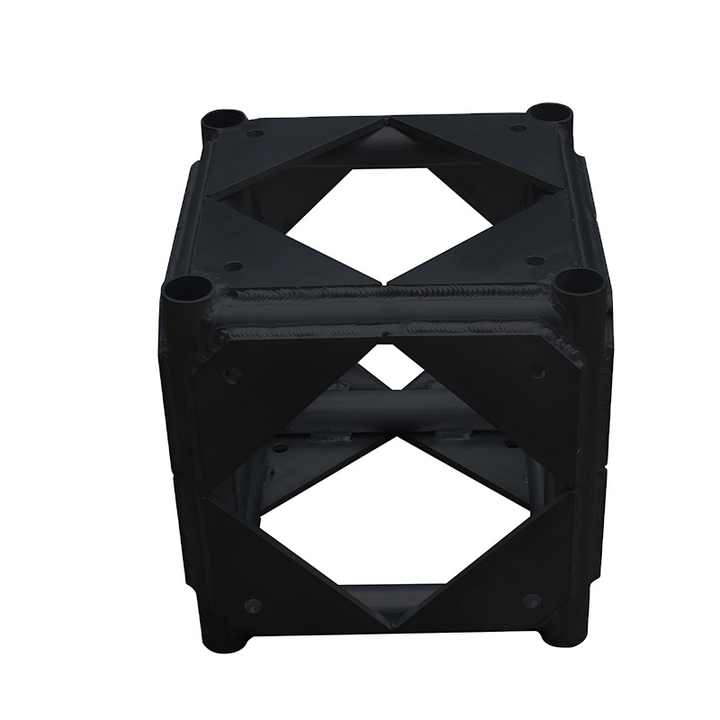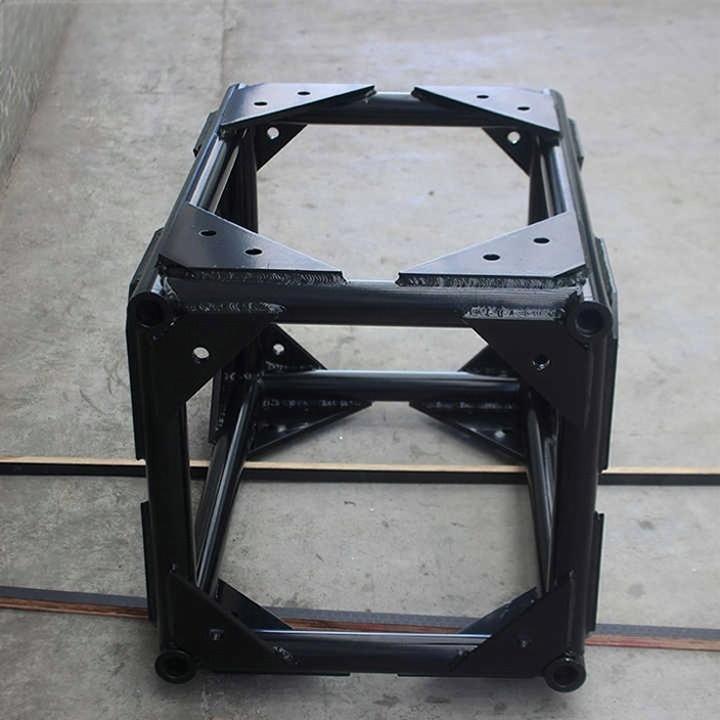What Are You Looking For?
The heavy-duty black 6-way aluminum truss corner represents a critical component in the construction of temporary structures for events, exhibitions, and architectural installations. Its seemingly simple design belies a complex interplay of engineering principles, material science, and manufacturing processes that dictate its performance, safety, and overall effectiveness.
The "6-way" designation refers to the crucial geometric characteristic of the corner: its ability to connect six separate truss segments. This allows for the creation of intricate, multi-faceted structures, offering significant flexibility in design and configuration. The design itself is typically based on a robust, triangulated framework. This triangulation is fundamental to the structural integrity of the truss, distributing loads effectively and preventing collapse under stress. The connection points, often incorporating robust bolted or pinned joints, are engineered to withstand considerable tensile and compressive forces, ensuring structural stability. The black powder coating, applied over the aluminum substrate, provides crucial protection against corrosion, enhancing longevity and maintaining aesthetic appeal even in challenging environmental conditions. This black finish is also a practical choice for various applications, allowing for better contrast against lighting and providing a sleek, professional appearance.

The selection of aluminum as the primary material for this truss corner is driven by several key advantages. Firstly, aluminum possesses a high strength-to-weight ratio. This is crucial for temporary structures where portability and ease of handling are paramount. Compared to steel, aluminum offers significant weight savings, facilitating easier transport, setup, and dismantling. Secondly, aluminum exhibits excellent corrosion resistance, especially when protected by powder coating. This significantly extends the lifespan of the truss corner, reducing the need for frequent replacements and minimizing maintenance costs. Thirdly, aluminum is relatively easy to machine and fabricate, allowing for precise manufacturing of the intricate geometry of the 6-way corner. The consistent quality achievable through modern aluminum extrusion and casting techniques ensures reliability and predictability in performance. However, aluminum's lower yield strength compared to steel requires careful design considerations to compensate for this, emphasizing the importance of the robust triangulation and secure jointing methods.
The applications of the heavy-duty black 6-way aluminum truss corner are diverse and extensive. It forms the backbone of numerous temporary structures commonly used in:
Live Event Production: Concert staging, theatrical productions, and corporate events frequently utilize these corners to build complex rigging systems for lighting, sound, and video equipment. The ability to create intricate three-dimensional structures is invaluable in creating visually stunning and functionally efficient setups.
Exhibition and Trade Show Booths: The flexibility offered by the 6-way corner allows for the creation of custom-designed booths with varying heights and shapes, maximizing space utilization and creating unique branding opportunities.
Architectural Installations: Temporary structures for artistic displays, pop-up shops, and architectural models often leverage the strength and versatility of aluminum truss systems, with the 6-way corner playing a pivotal role in connecting different sections.
Photography and Film Sets: The lightweight nature and robust construction make these corners ideal for creating temporary lighting and camera support structures.

However, the safe and efficient utilization of these truss corners requires careful planning and adherence to industry best practices. Proper assembly and disassembly are crucial to prevent accidents. The use of correctly sized and appropriately tightened fasteners is paramount. Regular inspection for signs of wear, tear, or damage is necessary to ensure structural integrity. Adherence to relevant safety standards and regulations is essential to minimize risks to personnel and equipment. Overloading the truss system beyond its specified load capacity can lead to catastrophic failure, emphasizing the need for accurate load calculations and responsible usage.
In conclusion, the heavy-duty black 6-way aluminum truss corner is not merely a simple component; it's a testament to the ingenuity of engineering and the advancements in material science. Its robust design, the strategic use of aluminum, and its wide array of applications highlight its importance in the construction of temporary structures across various industries. However, its safe and efficient use requires a thorough understanding of its capabilities, limitations, and the importance of adhering to stringent safety guidelines. Only through responsible implementation can the full potential of this critical component be realized, ensuring both structural integrity and operational safety.